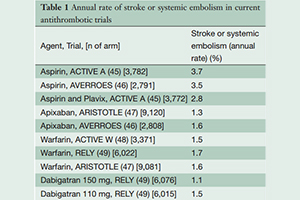Rationale and design of the Left Atrial Appendage Occlusion Study (LAAOS) III
Abstract
Background: Occlusion of the left atrial appendage (LAA) is a promising approach to stroke prevention in atrial fibrillation (AF). However, evidence of its efficacy and safety to date is lacking. We herein describe the rationale and design of a definitive LAA occlusion trial in cardiac surgical patients with AF.
Methods: We plan to randomize 4,700 patients with AF in whom on-pump cardiac surgical procedure is planned to undergo LAA occlusion or no LAA occlusion. The primary outcome is the first occurrence of stroke or systemic arterial embolism over a mean follow-up of four years. Other outcomes include total mortality, operative safety outcomes (chest tube output in the first post-operative 24 hours, rate of post-operative re-exploration for bleeding in the first 48 hours post-surgery and 30-day mortality), re-hospitalization for heart failure, major bleed, and myocardial infarction.
Results: Left Atrial Appendage Occlusion Study (LAAOS) III is funded in a vanguard phase by the Canadian Institutes for Health Research (CIHR), the Canadian Network and Centre for Trials Internationally, and the McMaster University Surgical Associates. As of September 9, 2013, 162 patients have been recruited into the study.
Conclusions: LAAOS III will be the largest trial to explore the efficacy of LAA occlusion for stroke prevention. Its results will lead to a better understanding of stroke in AF and the safety and efficacy of surgical LAA occlusion.
Cover






